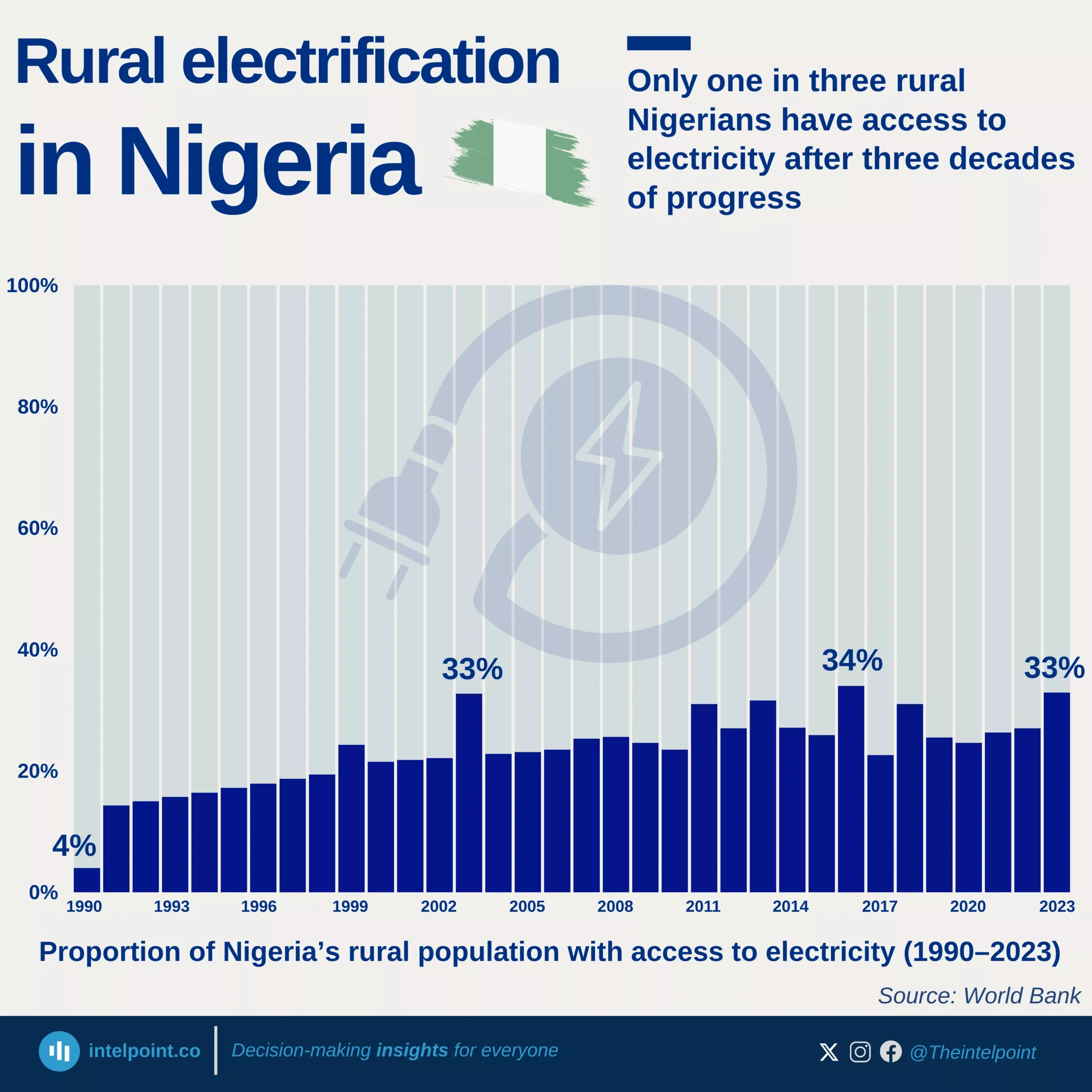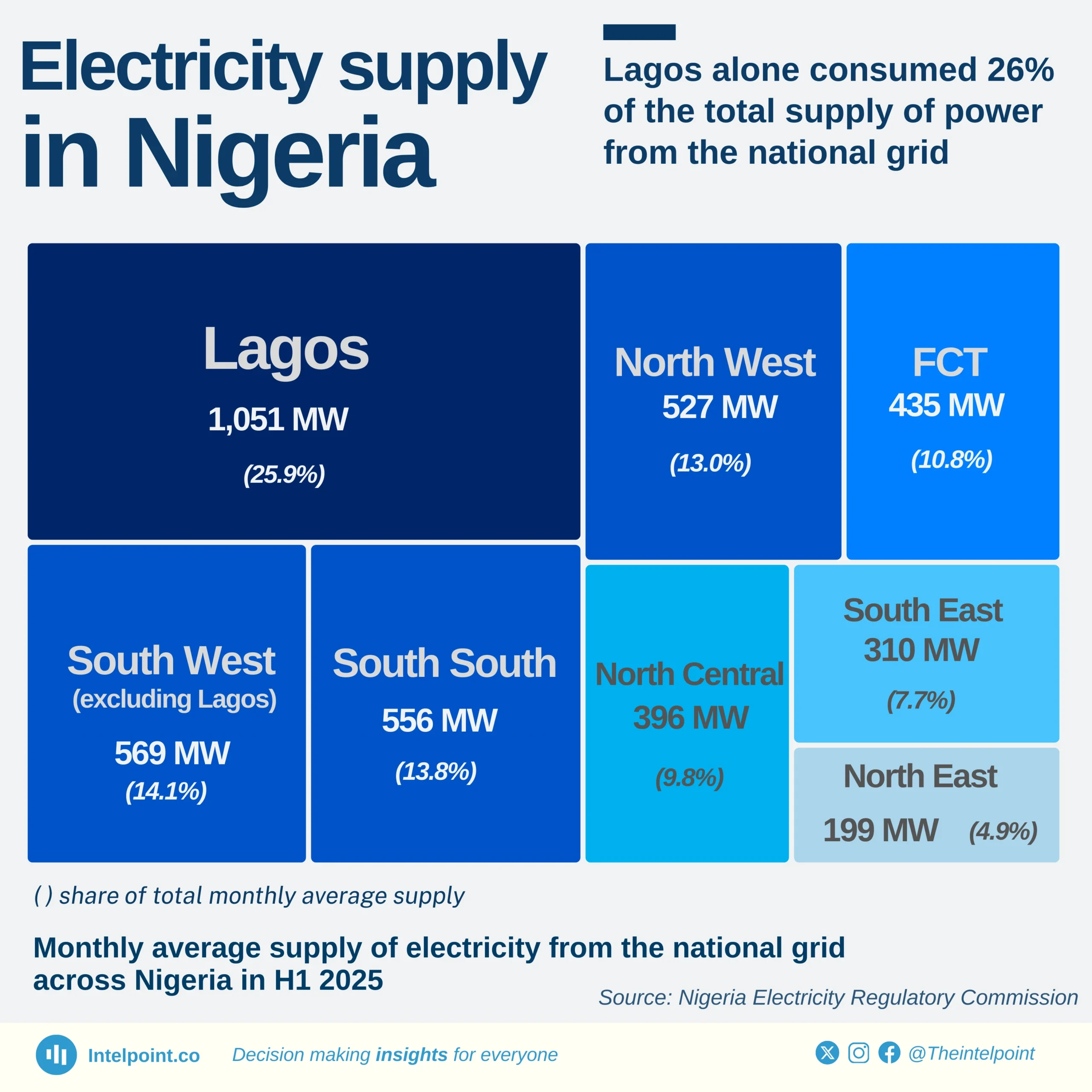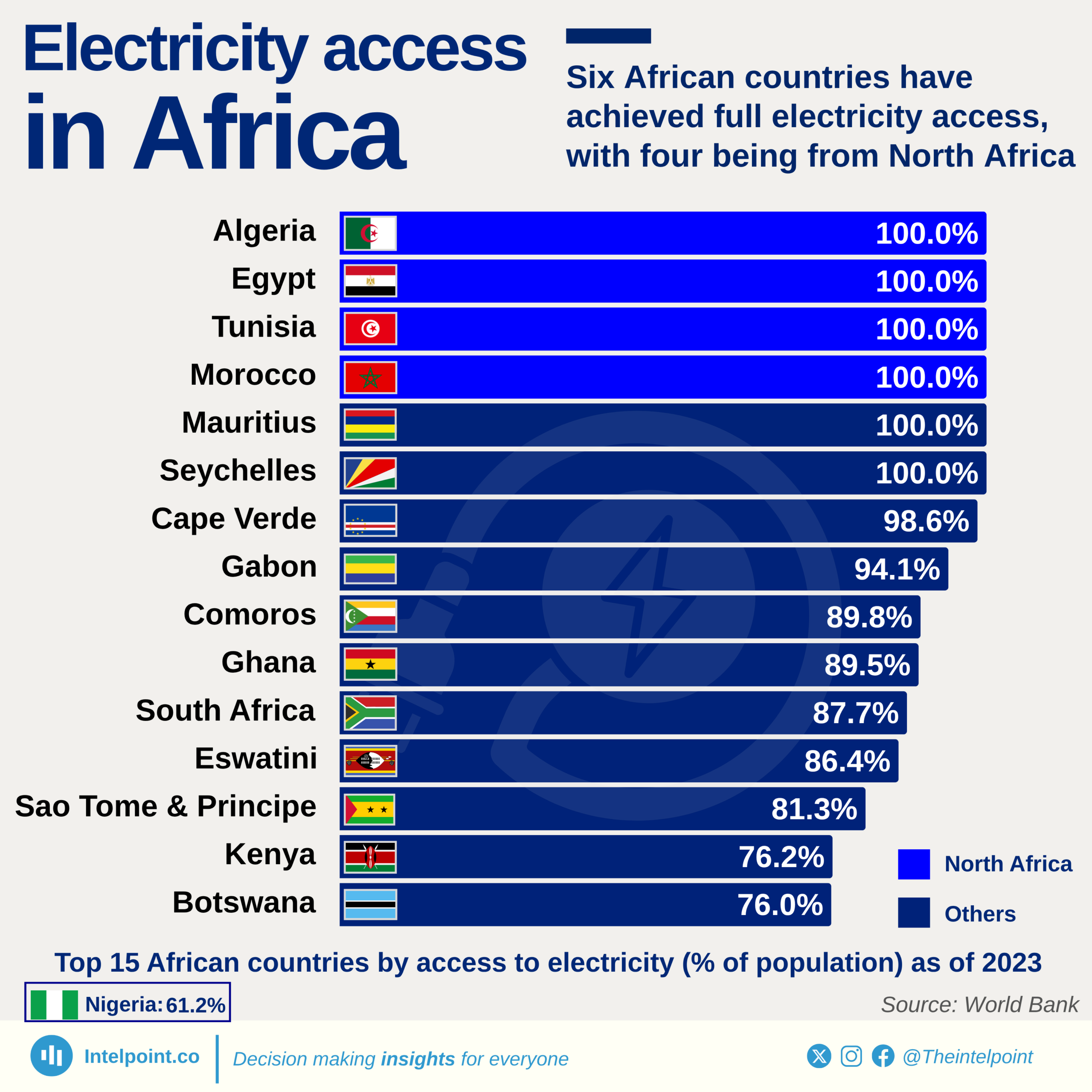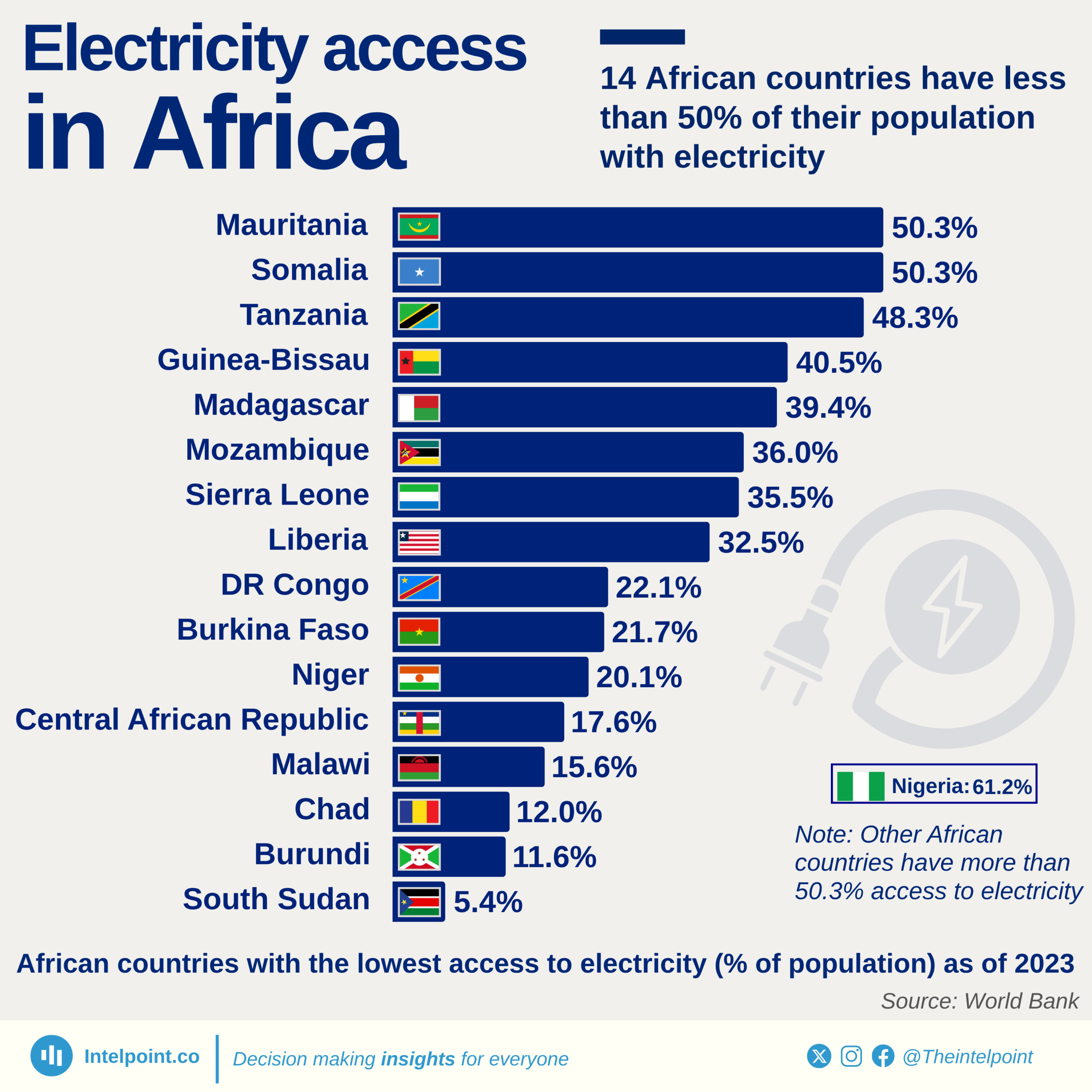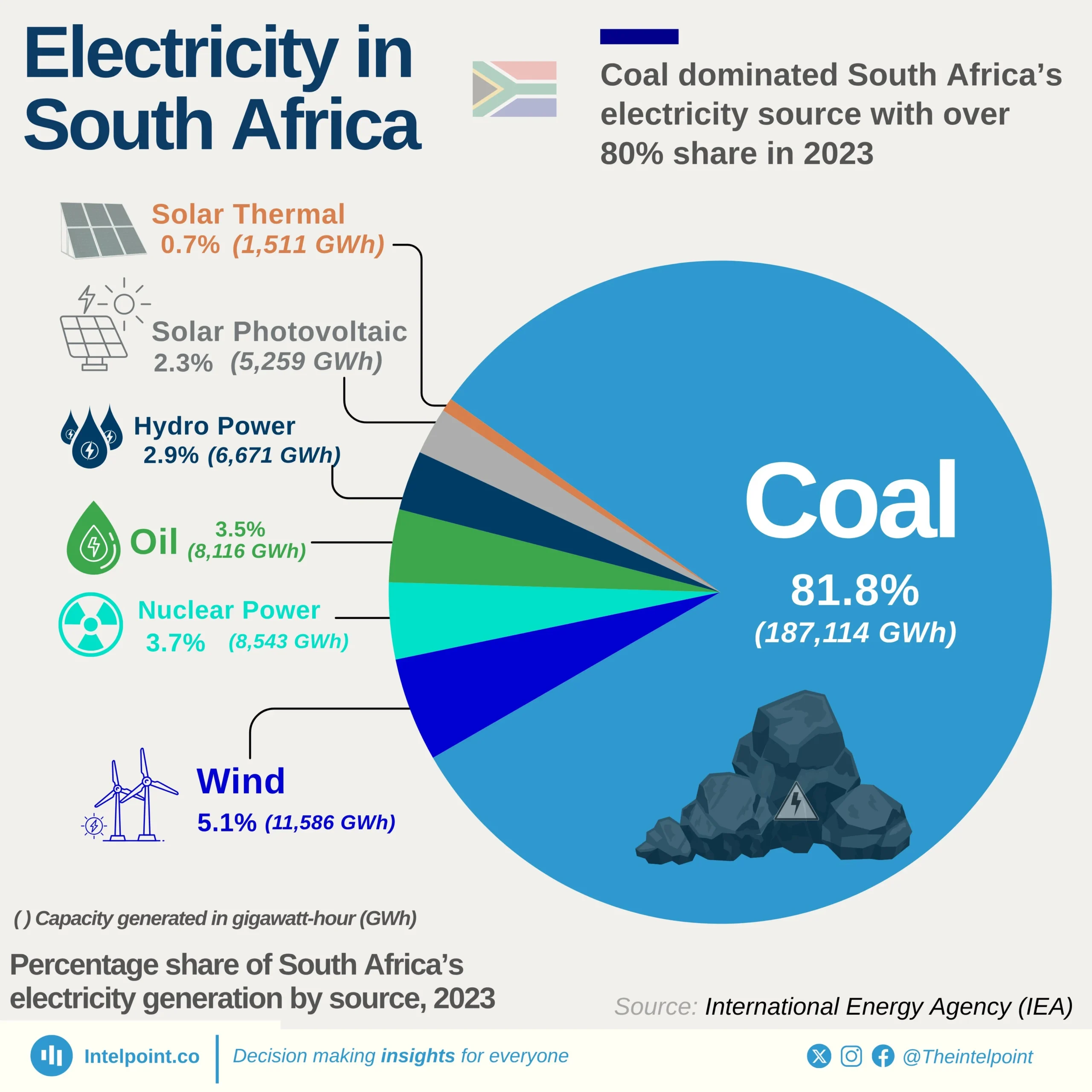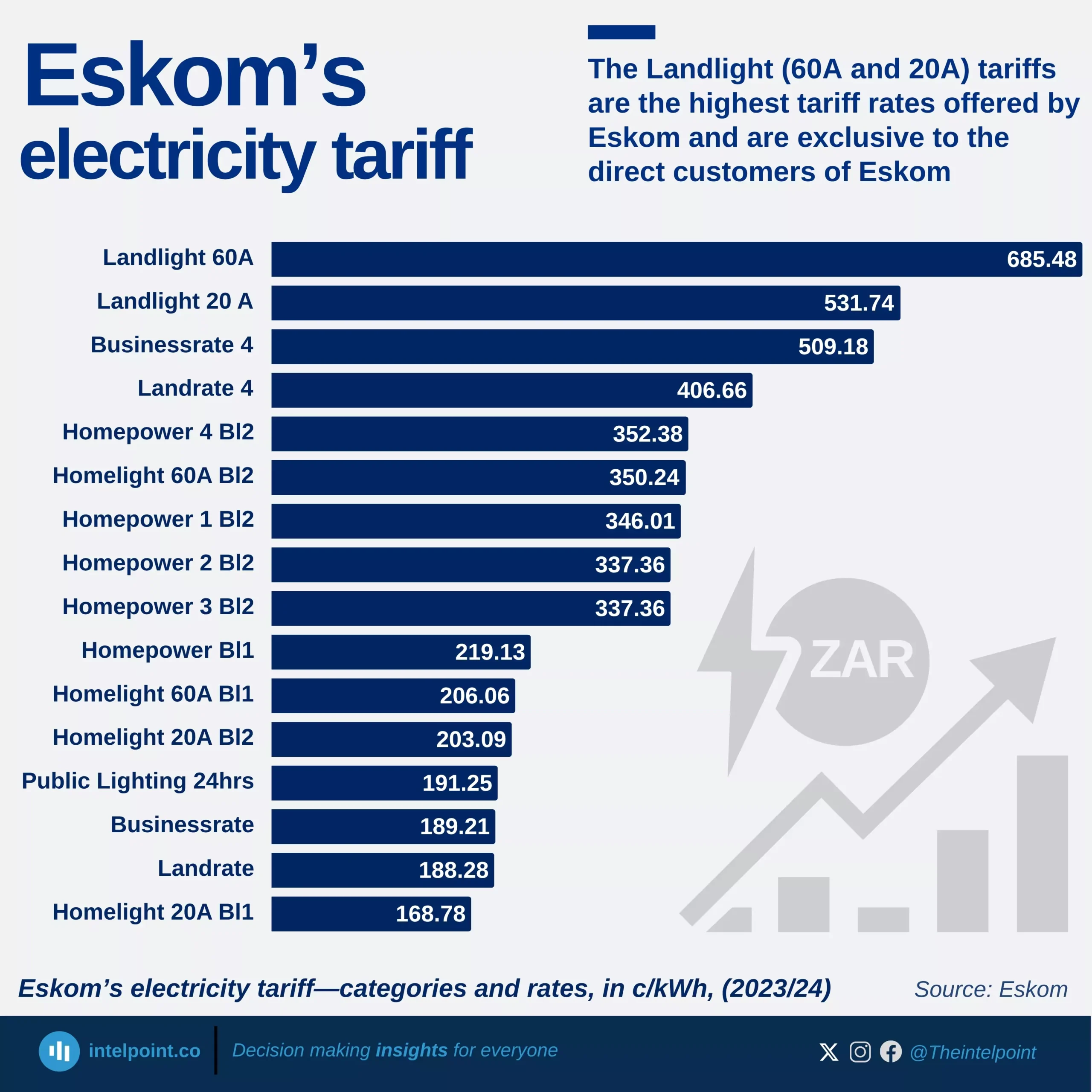Rural access to electricity in Nigeria has improved gradually over the past three decades but remains low relative to the overall rural population.
In 1990, only about 4% of rural Nigerians had access to electricity, leaving nearly the entire population without power. Progress was modest through the 1990s and early 2000s, with access rising to around 23% by 2006. Occasional spikes, such as in 2003 (32.7%), 2011 (31.0%), and 2016 (34.0%), suggest periods of accelerated connection drives or data adjustments, but overall growth has been uneven. By 2023, the rural electrification rate stood at roughly 33%, indicating that despite some gains, two-thirds of rural residents still lack reliable electricity.
The data reflects Nigeria’s slow but steady progress in expanding rural energy access, alongside persistent infrastructure and policy challenges in achieving universal coverage.
